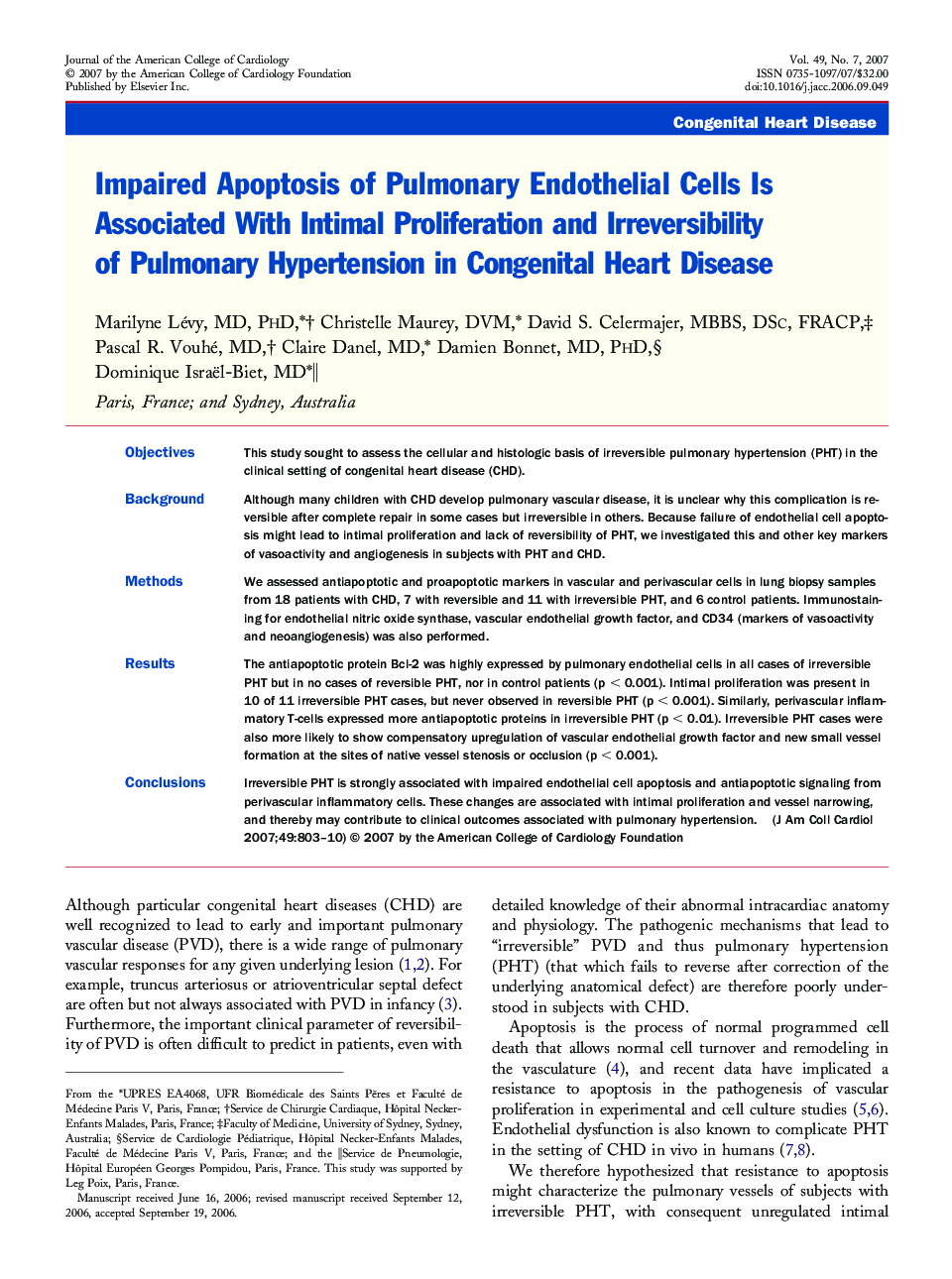| Article ID | Journal | Published Year | Pages | File Type |
|---|---|---|---|---|
| 2955204 | Journal of the American College of Cardiology | 2007 | 8 Pages |
ObjectivesThis study sought to assess the cellular and histologic basis of irreversible pulmonary hypertension (PHT) in the clinical setting of congenital heart disease (CHD).BackgroundAlthough many children with CHD develop pulmonary vascular disease, it is unclear why this complication is reversible after complete repair in some cases but irreversible in others. Because failure of endothelial cell apoptosis might lead to intimal proliferation and lack of reversibility of PHT, we investigated this and other key markers of vasoactivity and angiogenesis in subjects with PHT and CHD.MethodsWe assessed antiapoptotic and proapoptotic markers in vascular and perivascular cells in lung biopsy samples from 18 patients with CHD, 7 with reversible and 11 with irreversible PHT, and 6 control patients. Immunostaining for endothelial nitric oxide synthase, vascular endothelial growth factor, and CD34 (markers of vasoactivity and neoangiogenesis) was also performed.ResultsThe antiapoptotic protein Bcl-2 was highly expressed by pulmonary endothelial cells in all cases of irreversible PHT but in no cases of reversible PHT, nor in control patients (p < 0.001). Intimal proliferation was present in 10 of 11 irreversible PHT cases, but never observed in reversible PHT (p < 0.001). Similarly, perivascular inflammatory T-cells expressed more antiapoptotic proteins in irreversible PHT (p < 0.01). Irreversible PHT cases were also more likely to show compensatory upregulation of vascular endothelial growth factor and new small vessel formation at the sites of native vessel stenosis or occlusion (p < 0.001).ConclusionsIrreversible PHT is strongly associated with impaired endothelial cell apoptosis and antiapoptotic signaling from perivascular inflammatory cells. These changes are associated with intimal proliferation and vessel narrowing, and thereby may contribute to clinical outcomes associated with pulmonary hypertension.
